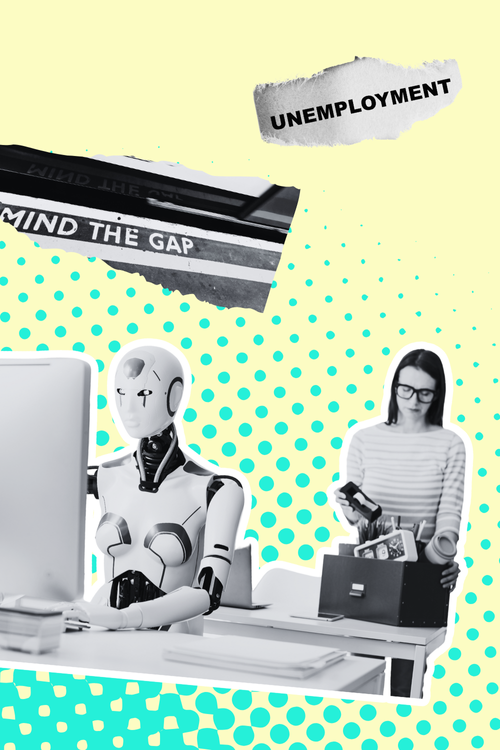Artificial Intelligence (AI) is reshaping industries, automating tasks, and redefining the future of work. Yet, as AI advances, it is also exacerbating long-standing gender disparities. Women remain underrepresented in AI development, face biases in AI-driven decision-making, and are less likely to benefit from AI-powered career advancements.
Despite the promise of AI as a tool for progress, it is increasingly clear that without intervention, it risks reinforcing and even widening the gender gap. From hiring algorithms that favor male candidates to AI tools that reflect societal biases, the technology is amplifying existing inequalities. Understanding how AI contributes to gender disparity - and what can be done to counteract it - is critical to ensuring a more equitable future.
Gender Gap Before AI Became a Trend
Before AI became a dominant force in the workforce, the gender gap was already a well-documented issue. Women have historically been underrepresented in STEM (Science, Technology, Engineering, and Mathematics) fields, including computer science and data science, which are foundational to AI development.
Key Statistics on the Gender Gap Before AI
- In 2018, women made up only 22% of AI professionals globally, compared to 78% of men.
- The gender pay gap remained persistent, with women earning 20% less than men on average across industries.
- Women were significantly underrepresented in leadership roles in tech, holding fewer than 14% of senior executive positions in AI-related fields.
Even before AI became mainstream, systemic barriers such as gender stereotypes, lack of mentorship, and workplace discrimination kept women from entering and thriving in AI-related careers.
Gender Gap After AI Became a Trend
With the rise of AI, the gender gap has not only persisted but, in many cases, widened. AI-driven decision-making systems, often trained on biased data, have reinforced gender disparities in hiring, promotions, and access to financial resources.
Key Statistics on the Gender Gap in AI Today
- Women now represent only 26% of the global AI workforce, a number that has barely improved over the past decade.
- In generative AI adoption, 50% of men use AI tools compared to only 37% of women, highlighting a significant digital divide.
- Women are 16% less likely to use AI-powered tools like ChatGPT, even when working in the same occupation as men 6.
These statistics suggest that AI is not bridging the gender divide but rather reinforcing it. The reasons behind this trend are multifaceted.
Why AI is Widening the Gender Gap
1. AI Reflects and Amplifies Existing Biases
AI systems learn from historical data, which often contains gender biases. If past hiring decisions favored men, AI-powered recruitment tools will continue to do so. Studies have shown that AI-driven hiring platforms have discriminated against female candidates, ranking their resumes lower than those of male applicants.
2. Lack of Female Representation in AI Development
Women are significantly underrepresented in AI research and development. Only 12% of leading machine learning researchers are female, meaning that AI models are predominantly designed by men. This lack of diversity results in AI systems that fail to consider female perspectives, leading to biased outcomes.
3. The Gender Digital Divide
Women, particularly in low-income countries, have less access to digital tools and the internet. In some regions, only 20% of women have internet access, limiting their ability to engage with AI technologies. This digital divide prevents women from benefiting from AI-driven opportunities in education and employment.
4. AI-Driven Job Displacement
Automation and AI are disproportionately affecting jobs traditionally held by women. Clerical and administrative roles, where women make up a significant portion of the workforce, are among the most at risk of being automated. Studies predict that more women than men will be affected by job displacement due to AI.
What Can Be Done to Close the Gender Gap in AI?
1. Increase Female Representation in AI Development
Encouraging more women to pursue careers in AI is critical. Companies and universities must actively recruit and support female AI researchers and engineers.
2. Address Bias in AI Systems
AI developers must implement bias detection and mitigation strategies. This includes using diverse datasets, conducting fairness audits, and ensuring transparency in AI decision-making.
3. Improve Digital Access for Women
Bridging the gender digital divide requires investment in internet access and digital literacy programs for women, particularly in underserved regions.
4. Promote Inclusive AI Education
Governments and organizations should support STEM education for girls and provide mentorship programs to encourage women to enter AI-related fields.
5. Advocate for Policy Changes
Regulations should require AI companies to conduct gender impact assessments and ensure fair AI practices in hiring, lending, and healthcare.
Free Resources for Women to Learn AI
To help close the gender gap in AI, several organizations offer free learning resources tailored for women:
- Elements of AI - A free online course designed to introduce AI concepts to beginners.
- AI Skills 4 Women - A free course that covers AI fundamentals, ethics, and cybersecurity.
- Women Go Tech AI Foundations - A program designed to help women integrate AI into their careers.
- UN Women AI School - A program focused on using AI for social change.
By leveraging these resources, women can gain the skills needed to participate in and shape the future of AI.
Conclusion
AI has the potential to be a force for good, but without intentional efforts to address gender disparities, it risks deepening existing inequalities. By increasing female representation in AI, addressing bias in AI systems, and expanding access to AI education, we can work toward a more inclusive and equitable future.
The time to act is now. AI should not be a tool that reinforces gender inequality - it should be a catalyst for change.

